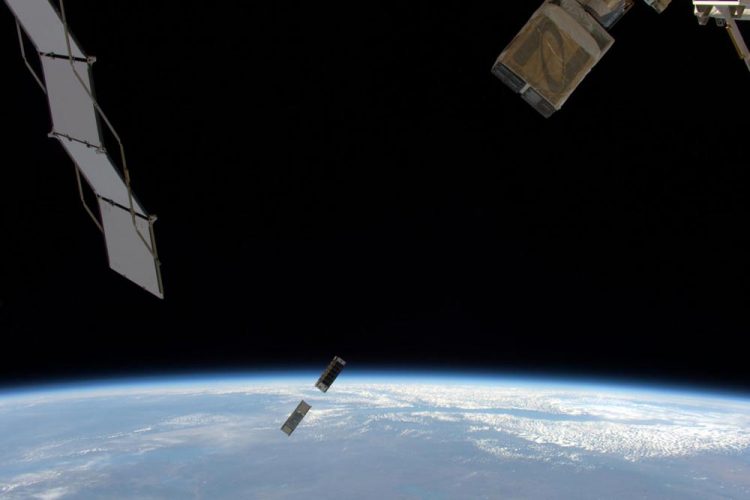MinXSS CubeSat deployed from ISS to study Sun's soft x-rays

On May 16, 2016, the NASA-funded MinXSS CubeSat deployed from an airlock of the International Space Station to enter an orbit around Earth. MinXSS observes soft X-rays from the sun -- such X-rays can disturb the ionosphere and thereby hamper radio and GPS signals. Credits: ESA/NASA
MinXSS will operate for up to 12 months. The CubeSat observes soft X-rays from the sun, which can disrupt Earth's upper atmosphere and hamper radio and GPS signals traveling through the region.
The intensity of the soft x-ray emissions emitted from the sun is continuously changing over a large range – with peak emission levels occurring during large eruptions on the sun called solar flares.
MinXSS data will also help us understand the physics behind solar flares. The soft X-rays carry information about the temperature, density and chemical composition of material in the sun's atmosphere, allowing scientists to trace how events like flares and other processes heat the surrounding material in the sun's atmosphere – which are still being debated among solar scientists.
?CubeSats are a new, low-cost tool for space science missions. Instead of the traditional space science missions that carry a significant number of custom-built, state-of-the-art instruments, CubeSats are designed to take narrowly targeted scientific observations, with only a few instruments, often built from off-the-shelf components.
For example, MinXSS uses a commercially purchased X-ray spectrometer for a detector and an extendable tape measure as a radio antenna. The MinXSS development program was funded by the NASA Science Mission Directorate CubeSat Initiative Program and implemented by the University of Colorado Boulder under the leadership of Principal Investigator Tom Woods.
MinXSS was launched via the NASA CubeSat Launch Initiative program on Dec. 6, 2015, aboard Orbital ATK's Cygnus spacecraft through NASA's Commercial Resupply Services contract.
Since its inception in 2010, the CSLI has selected more than 120 CubeSats for launch and deployed 43 small satellites as part of the agency's Launch Services Program's Educational Launch of Nanosatellite Missions.
Media Contact
All latest news from the category: Power and Electrical Engineering
This topic covers issues related to energy generation, conversion, transportation and consumption and how the industry is addressing the challenge of energy efficiency in general.
innovations-report provides in-depth and informative reports and articles on subjects ranging from wind energy, fuel cell technology, solar energy, geothermal energy, petroleum, gas, nuclear engineering, alternative energy and energy efficiency to fusion, hydrogen and superconductor technologies.
Newest articles

Making diamonds at ambient pressure
Scientists develop novel liquid metal alloy system to synthesize diamond under moderate conditions. Did you know that 99% of synthetic diamonds are currently produced using high-pressure and high-temperature (HPHT) methods?[2]…

Eruption of mega-magnetic star lights up nearby galaxy
Thanks to ESA satellites, an international team including UNIGE researchers has detected a giant eruption coming from a magnetar, an extremely magnetic neutron star. While ESA’s satellite INTEGRAL was observing…

Solving the riddle of the sphingolipids in coronary artery disease
Weill Cornell Medicine investigators have uncovered a way to unleash in blood vessels the protective effects of a type of fat-related molecule known as a sphingolipid, suggesting a promising new…





















